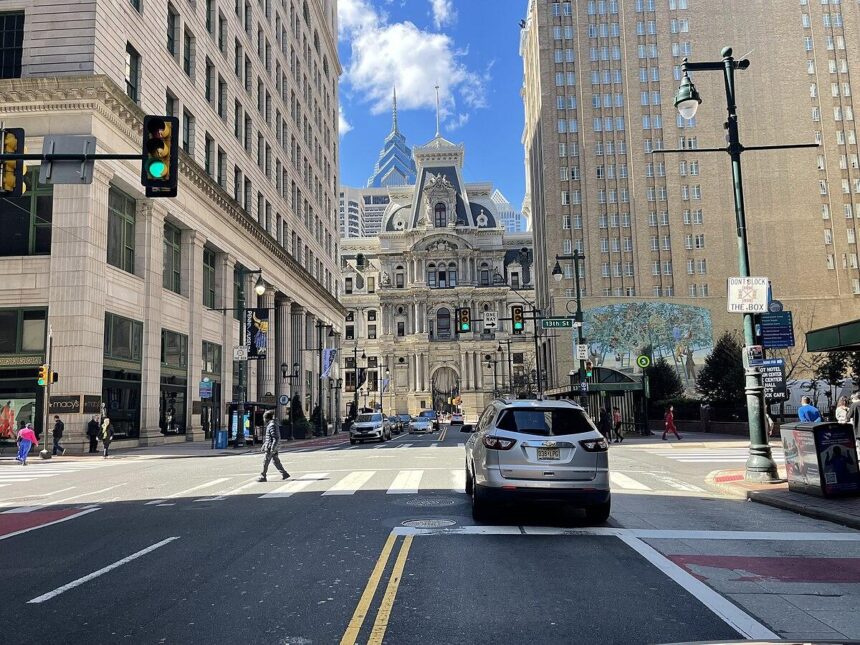San Francisco’s Market Street to Open to Ride-Hailing Services, Sparking Local Controversy
In a move that is expected to reshape transportation dynamics in the heart of San Francisco, city officials have announced that Market Street will soon welcome ride-hailing services, allowing vehicles from companies like Uber and Lyft to operate on one of the city’s most iconic thoroughfares. While proponents argue that the change will enhance mobility and convenience for residents and visitors alike, local businesses and community members are voicing concerns about the potential for increased congestion, pollution, and safety hazards. As the city prepares for this significant shift in policy, the debate intensifies, highlighting the challenges of balancing innovation with the needs of urban communities.
Market Street Welcomes Ride-Hailing Services Amid Community Concerns
San Francisco’s Market Street, renowned for its vibrant atmosphere and bustling foot traffic, is set to welcome ride-hailing services, a development that has sparked a myriad of reactions from the local community. Proponents of the initiative argue that this move will enhance convenience for commuters and tourists, potentially leading to increased footfall in shops and businesses along the route. They highlight the following benefits:
- Improved Mobility: Easier access to various parts of the city.
- Economic Boost: Increased patronage for local establishments.
- Shorter Wait Times: Faster pick-up and drop-off options for riders.
However, not all residents share this optimistic view. Many locals express significant concerns over increased traffic congestion and safety issues, fearing that more vehicles will disrupt the pedestrian-friendly nature of Market Street. Critics of the ride-hailing expansion wish to draw attention to potential downsides, including:
- Pedestrian Safety: Higher risk of accidents involving foot traffic.
- Noise Pollution: Increased vehicle noise impacting local quality of life.
- Environmental Considerations: Concerns about emissions from additional cars on the road.
| Aspect | Supporters’ View | Opponents’ View |
|---|---|---|
| Transportation Ease | Enhanced connectivity | Increased congestion |
| Local Economy | More customers for businesses | Potential rise in costs for residents |
| Community Environment | Improved accessibility | Decreased pedestrian comfort |
Local Reactions: Understanding the Divide on Market Street’s New Ride-Hailing Policy
The decision to open Market Street to ride-hailing services has sparked a mixed response among residents and local businesses. For some, the change is seen as a welcome opportunity to enhance connectivity and convenience, allowing for easier access to shopping, dining, and entertainment options along this iconic thoroughfare. Advocates argue that the policy will bolster economic activity by attracting more visitors and increasing foot traffic in the area. Key benefits cited by supporters include:
- Increased accessibility for those relying on ride-hailing services
- Potential to reduce congestion by offering alternative transport options
- Boost for local businesses as more people visit the area
Conversely, a significant number of locals express concerns over the potential negative impacts the policy may introduce. Detractors point to a history of traffic congestion and safety issues on Market Street as reasons for their apprehension. Many residents fear that the influx of ride-hailing vehicles will exacerbate these existing problems, leading to increased air pollution and noise levels. Specific worries include:
- Safety for pedestrians and cyclists
- Adverse effects on bus transit and public transportation efficiency
- Declining quality of life due to heightened street activity
Potential Solutions: Balancing Growth and Local Sentiment on Market Street
As Market Street prepares to accommodate ride-hailing services, city planners and local leaders face the daunting task of ensuring that the growth does not compromise the unique character of the area. Engaging with community members through regular town hall meetings can encourage open dialogue about the potential impacts. Additionally, employing traffic management strategies could alleviate congestion and improve safety for pedestrians, ensuring that the street remains accessible for everyone. Some proposed measures include:
- Dedicated pick-up/drop-off zones: Designated areas will minimize disruption along the busy thoroughfare.
- Enhanced public transportation links: Increasing bus and bike lanes could provide alternative, efficient transit options.
- Increased green space: Integrating parks and seating areas can make Market Street a more welcoming environment.
Furthermore, data-driven approaches to monitor traffic patterns and local sentiments can help strike a balance between commercial interests and resident concerns. By implementing a community feedback system, officials can gather insights and adapt policies accordingly, addressing public grievances before they escalate. Below is a snapshot of potential benefits and challenges associated with this initiative:
| Benefits | Challenges |
|---|---|
| Increased economic activity | Potential for increased congestion |
| Improved accessibility | Concerns over safety for pedestrians |
| Enhanced urban experience | Displacement of long-term community businesses |
In Retrospect
In conclusion, the reopening of San Francisco’s Market Street to ride-hailing services marks a significant shift in the city’s transportation landscape. While proponents argue that it will enhance mobility and provide needed access in a bustling urban corridor, local residents remain concerned about the potential implications for pedestrian safety, traffic congestion, and the overall character of the street. As city officials move forward with this initiative, it will be crucial to monitor its impact on both the local community and the broader dynamics of urban transit. Ongoing dialogue between stakeholders will be essential to ensure that the needs of all residents are addressed as this new chapter in Market Street’s usage unfolds.









